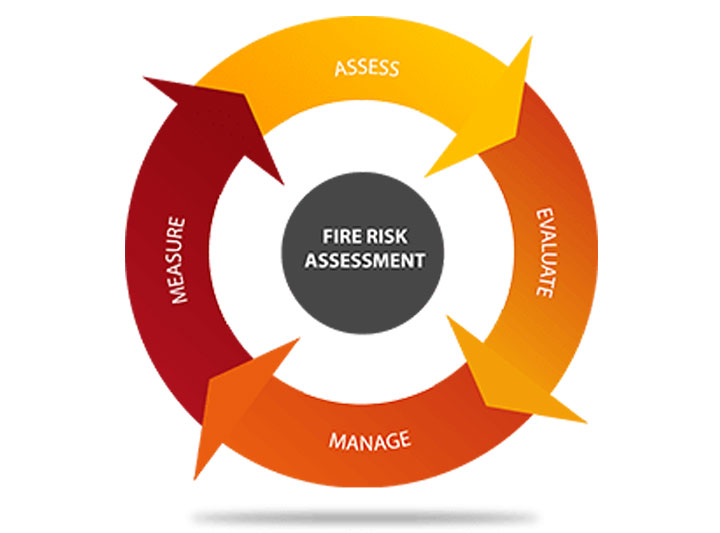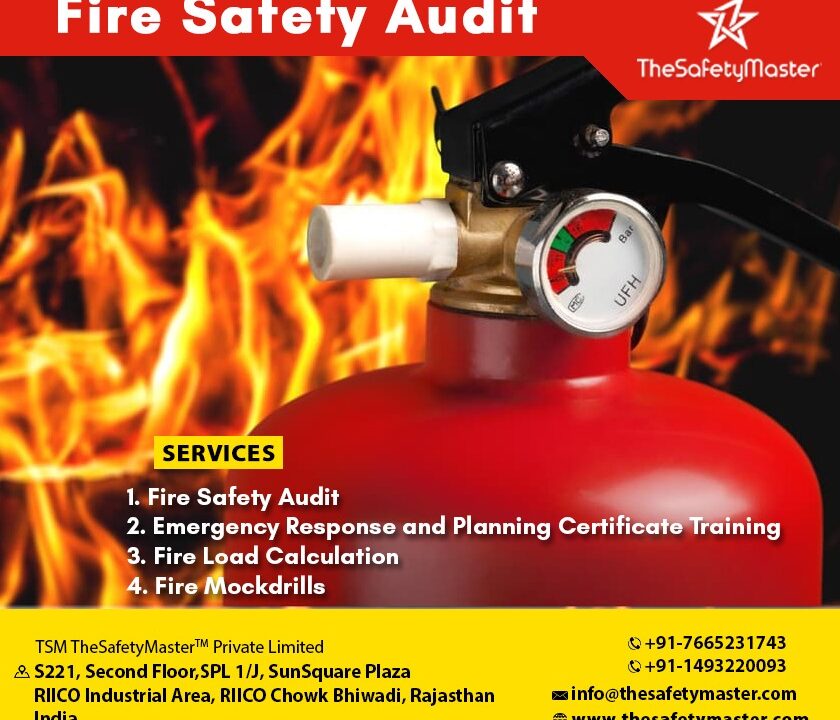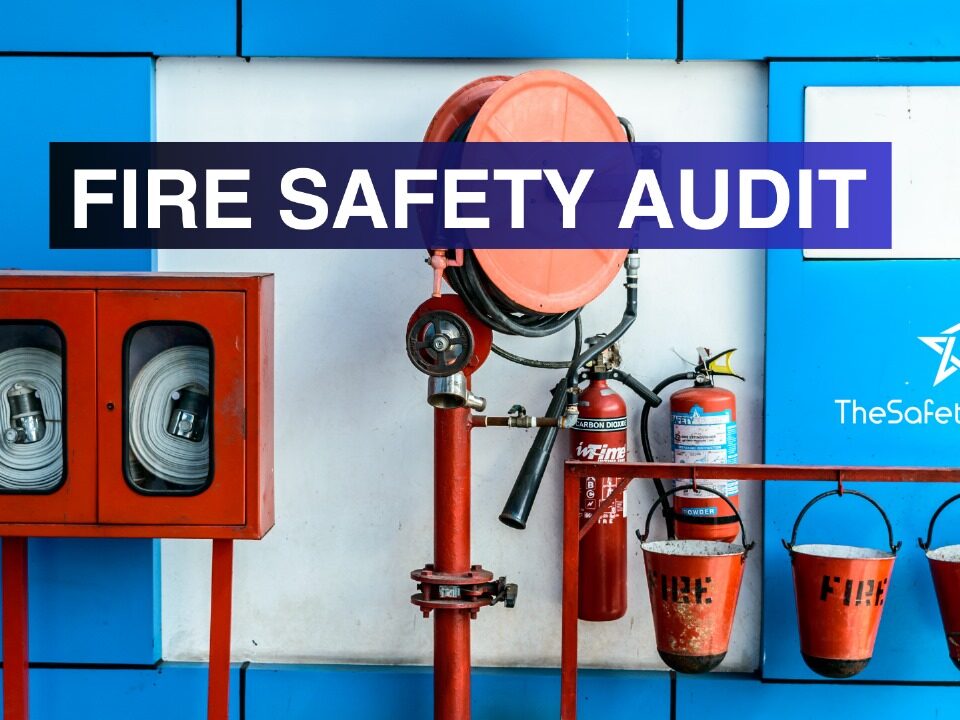Avoiding Disaster: Why Your Business Needs a Fire Audit Now

Protecting Your Investment: Why a Statutory Safety Audit is Necessary
May 19, 2023
Dust Explosion Hazard Assessments
May 19, 2023Avoiding Disaster: Why Your Business Needs a Fire Audit Now
By TSM TheSafetyMaster P Limited
Is your business at risk of a fire disaster? Do you know the steps you need to take to ensure the safety of your employees and customers? A fire audit is an essential process that every business owner should undertake to avoid potential disasters.
In this article, we will highlight the importance of fire safety in business, the risks of neglecting fire safety measures, and provide you with a step-by-step guide on how to conduct a fire audit. We promise to equip you with valuable knowledge and practical tips that can help save lives and protect your business from financial losses. So sit back, relax, and let’s dive into why your business needs a fire audit now.
The Importance of Fire Safety in Business
Fire safety is a crucial aspect of any business, regardless of its size or industry. Implementing proper fire safety measures not only protects your property and assets but also safeguards the lives of your employees and customers. It is essential to understand that fire emergencies can occur at any time, and without proper preparation, they can result in severe consequences.
By prioritizing fire safety in your business, you demonstrate your commitment to the safety and well-being of every person who interacts with your company. Moreover, an effective fire safety plan can help you mitigate risks and minimize losses in case an emergency does occur. Investing time and resources into creating a comprehensive fire safety plan is vital for businesses looking to protect their assets, maintain customer trust, and uphold their reputation.
The Risks of Neglecting Fire Safety Measures
Business owners who neglect fire safety measures expose themselves, their employees, and their customers to a significant amount of risk. The reality is that fires can break out quite easily in a commercial setting, and the consequences can be disastrous. For instance, many businesses never recover from the damage that fires cause, meaning they end up shutting down permanently.
Aside from property damage and financial loss, there is also the potential for serious injury or even death. If employees or customers are not properly trained in fire safety procedures or if there are no fire prevention measures in place, people can get seriously hurt or lose their lives. Furthermore, businesses that do not have adequate fire safety measures will likely face legal repercussions if something goes wrong – something that could have been avoided with proper foresight and preparation.
Step-by-Step Guide to Conducting a Fire Audit
Conducting a fire audit is an essential step in ensuring the safety of your business. A fire audit involves identifying potential fire hazards in your workplace, creating an emergency evacuation plan, implementing fire safety equipment and training, and maintaining fire safety standards. Here is a detailed guide on how to conduct a fire audit for your business.
The first step in conducting a fire audit is to identify potential fire hazards in your business. This involves assessing the building’s structural elements such as electrical systems, heating and cooling systems, flammable materials storage, and any potential ignition sources. Once you have identified these hazards, you can take steps to minimize or eliminate them.
The second step is to create an emergency evacuation plan that outlines the procedures for evacuating employees and customers during a fire emergency. This should include designated evacuation routes, assembly points outside the building, and procedures for accounting for all employees after evacuation.
The third step is to implement fire safety equipment such as smoke detectors, sprinklers, extinguishers or hydrants depending on the type of building construction and use. Employees also need training on how to use these firefighting equipment properly if necessary.
Finally, it is essential that you maintain regular inspections of your premises’ readiness regarding fires through periodic reviews of all aspects mentioned above.
Identifying Fire Hazards in Your Business
Identifying fire hazards in your business is a crucial step towards ensuring the safety of your employees and visitors. This step involves a comprehensive inspection of your workplace, including all rooms, hallways, storage areas, and outdoor spaces. During this inspection, you will need to determine the potential sources of fire and ignition, such as faulty electrical equipment or improperly stored flammable liquids.
You will also need to evaluate the risks associated with each potential hazard and develop strategies to eliminate or mitigate them. For example, if you have old wiring or overloaded outlets that pose a risk of electrical fires, you may need to hire an electrician to fix them promptly. If you store flammable chemicals on-site, make sure they are kept in approved containers and stored in designated areas away from ignition sources.
By identifying potential fire hazards in your business early on, you can take proactive measures to prevent fires from occurring. This not only protects your employees and customers but also prevents costly damage to property and equipment.
Creating an Emergency Evacuation Plan
Having a well-crafted emergency evacuation plan is crucial in preventing casualties and minimizing property damage if a fire breaks out. Your evacuation plan should be easy to understand, regularly reviewed, and practiced by all employees to ensure that everyone knows what to do in case of an emergency.
The first step in creating your emergency evacuation plan is to identify all the possible escape routes from the building. Ensure that there are no blockages or obstacles in these routes that could hinder escape. Next, designate assembly points where employees should gather after evacuating the building. These assembly points should be at a safe distance from the building.
You should also assign roles and responsibilities to key individuals who will be responsible for ensuring that everyone is safely evacuated. Additionally, you can incorporate technology such as fire alarms, PA systems, and intercoms into your emergency evacuation plan to quickly alert employees about the fire outbreak.
In conclusion, having a well-planned emergency evacuation plan can save lives and minimize damage during a fire outbreak in your business premises. Ensure that you train employees on the evacuation procedures and regularly conduct drills to keep them prepared for any unforeseen emergencies.
Implementing Fire Safety Equipment and Training
Once you have identified the fire hazards in your business and created an emergency evacuation plan, it’s time to implement fire safety equipment and training. This involves installing fire extinguishers, smoke detectors, sprinkler systems, and other safety equipment in your workplace. You should also provide training to your employees on how to use this equipment properly.
When selecting fire safety equipment for your business, it’s important to choose high-quality products that meet the relevant safety standards. You should also ensure that the equipment is regularly maintained and serviced to ensure that it functions effectively in case of a fire emergency. Additionally, training your employees on how to use this equipment could make all the difference in preventing a disaster. A well-prepared business with trained personnel can quickly put out small fires before they spread. In addition to saving lives, reacting promptly can help avoid costly damages caused by flames or smoke. Being prepared for an emergency will provide a great deal more confidence when dealing with day-to-day operations as well as any potential disasters that may arise; being proactive about implementing these measures can save not only money but potentially lives.
Maintaining Fire Safety Standards in Your Business
Conducting a fire audit and implementing fire safety measures in your business is not a one-time task. It requires ongoing monitoring and maintenance to ensure that your business remains safe from the risk of fire. Maintaining fire safety standards in your business helps you to mitigate risks, identify new threats, and respond effectively in case of an emergency.
One way to maintain fire safety standards is by conducting regular inspections to ensure that all equipment is working correctly, including smoke detectors and sprinkler systems. You should also schedule regular training sessions for employees to educate them on how they can prevent fires from occurring and what steps they should take if one breaks out. Regularly reviewing the emergency evacuation plan with employees will help ensure that everyone knows what they need to do during an emergency.
Fire Safety Checklist for Business Owners
As a business owner, it is important to prioritize the safety and well-being of your employees and customers. By conducting regular fire audits, you can identify potential hazards and take steps to prevent fires from breaking out in the first place. To help you get started, here is a fire safety checklist that every business owner should follow:
1. Install smoke detectors in every room of your building and ensure they are regularly tested.
2. Have a clear emergency evacuation plan in place for all employees.
3. Assign responsibilities to designated personnel during an emergency.
4. Conduct regular training sessions with employees on what to do in case of a fire.
5. Keep all exits clear at all times.
6. Regularly inspect all electrical equipment for frayed cords or other damage.
7. Store flammable materials properly and away from heat sources.
The above checklist covers some basic steps that can go a long way towards preventing fires in your business premises, but it is by no means exhaustive. Depending on the nature of your business, there may be additional measures you need to take to ensure maximum safety for everyone involved.
By following this checklist and taking any additional necessary steps, you can avoid disaster and keep your business running smoothly.
Benefits of Conducting Regular Fire Audits in Your Business
Regular fire audits not only protect your business from disasters but also provide numerous benefits that can help you run a successful business. The most significant benefit is the peace of mind knowing that your employees, customers, and assets are safe from fire hazards.
In addition to safety benefits, conducting regular fire audits can help you save money on insurance premiums. Insurance companies typically offer incentives for businesses that have comprehensive fire safety measures in place. In turn, this could lead to improved relationships with insurers and better premiums for your business.
In conclusion, the importance of fire safety in business cannot be overstated. Through conducting regular fire audits, you can identify and address potential hazards before disaster strikes, keeping your employees and customers safe and your business protected. Investing in fire safety equipment, training your staff on proper procedures, and maintaining high standards of safety are crucial steps towards ensuring the longevity and success of your business. By taking these measures now, you can avoid costly damage and potential loss of life in the future. Remember, a little prevention goes a long way in keeping your business secure.
Sanjeev Paruthi
TSM TheSafetyMaster® Private Limited
Unit No 221-451-452, SPL1/J, 2nd Floor, Sunsquare Plaza Complex, RIICO Chowk, Bhiwadi 301019, Rajasthan, India
Phone: +91 1493 22 0093/+91-124-4881109
Mobile: +91 7665231743/9413882016
Email: info@thesafetymaster.com




